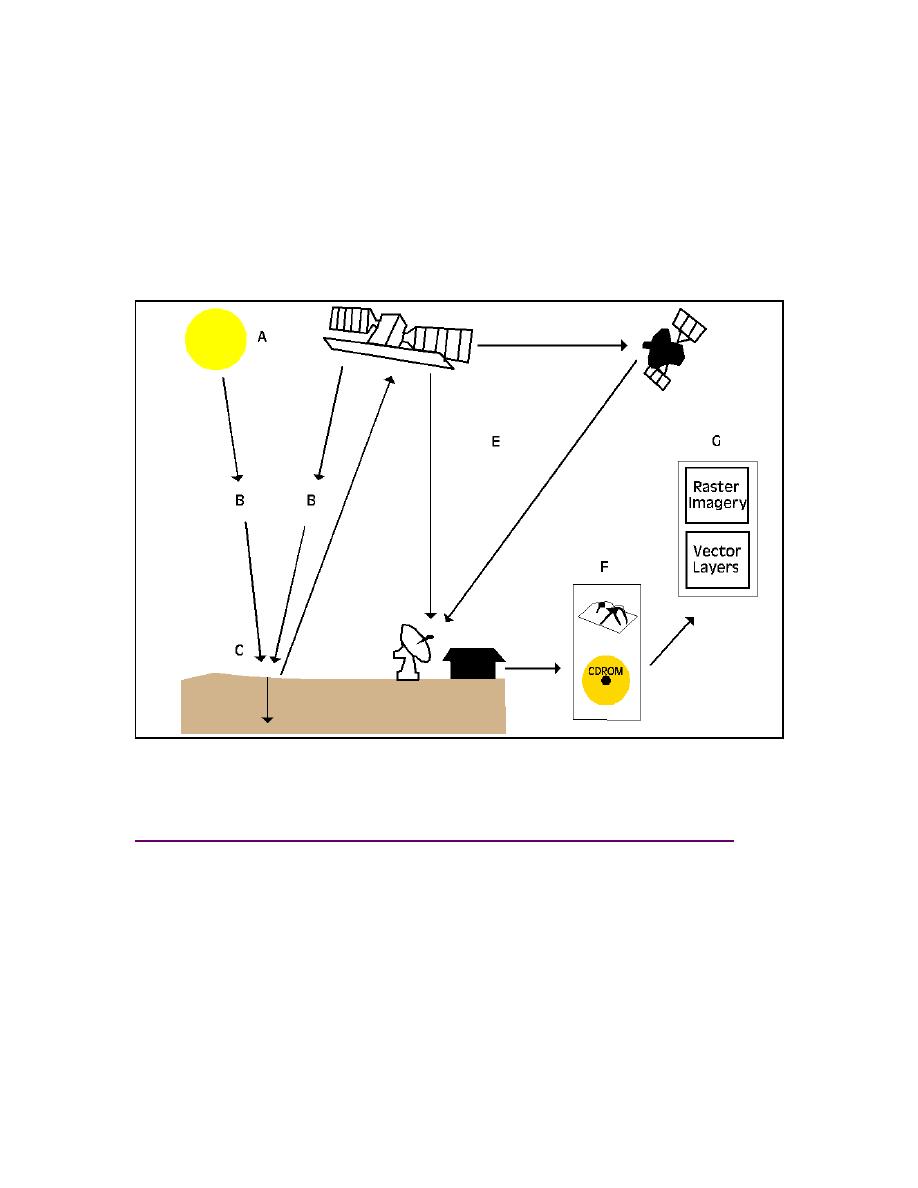
EM 1110-2-2907
1 October 2003
b. Primary components of remote sensing are as follows:
Electromagnetic energy is emitted from a source.
This energy interacts with particles in the atmosphere.
Energy interacts with surface objects.
Energy is detected and recorded by the sensor.
Data are displayed digitally for visual and numerical interpretation on a computer.
Figure 2-1. The satellite remote sensing process. A--Energy source or illumination
(electromagnetic energy); B--radiation and the atmosphere; C--interaction with the target;
D--recording of energy by the sensor; E--transmission, reception, and processing; F--
interpretation and analysis; G--application. Modified from
tesy of the Natural Resources Canada.
2-4 Component 1: Electromagnetic Energy Is Emitted From A Source.
a. Electromagnetic Energy: Source, Measurement, and Illumination. Remote sensing
data become extremely useful when there is a clear understanding of the physical princi-
ples that govern what we are observing in the imagery. Many of these physical principles
have been known and understood for decades, if not hundreds of years. For this manual,
the discussion will be limited to the critical elements that contribute to our understanding
of remote sensing principles. If you should need further explanation, there are numerous
works that expand upon the topics presented below (see Appendix A).
2-2



 Previous Page
Previous Page
